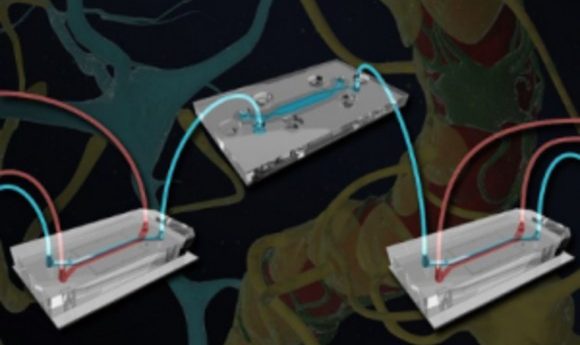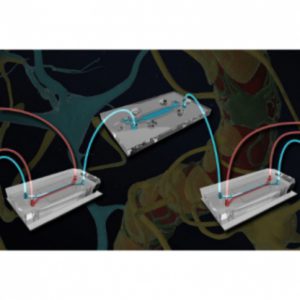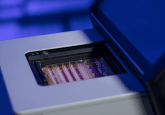Organ chips model blood—brain barrier

The interactions between the brain and its blood vessels have been recapitulated using artificial organ chips.

Researchers from the Wyss Institute for Biologically Inspired Engineering at Harvard University (MA, USA) have developed an organ chip system that combines a brain chip with a blood brain barrier (BBB) chip. The method, published in Nature Biotechnology, creates a system that is able to respond just like the brain when presented with drugs such as methamphetamine.
The BBB is a network of blood vessels, pericytes and astrocytes that supply the brain with oxygen and nutrients. It’s a highly selective barrier that protects the body’s most precious organ; the brain. If the BBB is disrupted, which happens when it is exposed to methamphetamine, the brain can become vulnerable to damage.
Scientists have previously used in vitro and in vivo models to model interaction between the brain and the BBB. However, these models have often been too simple or too complex, respectively. To solve this problem the group created a system consisting of artificial organ chips that are linked by microfluidics. This allowed them to generate an efficient model for investigating how the BBB interacts with and influences brain function.
Author Ben Maoz explains how finding this sweet spot has helped the research:
“Most of today’s research on organ chips is focused on trying to increase the complexity of cell types on each chip, but we realized that the brain is already so complex that we couldn’t analyze it on one chip, so we did the opposite and divided one organ onto multiple chips. The beauty of this work is that organ chips were able to open up another dimension for neurological research that no other method could; decoupling a very dense organ to unveil new interactions between the different structures within the brain.”
The organ chip system mimics the in vivo brain-BBB system. Three chips – BBB influx, brain, and BBB efflux – are connected via a channel lined with endothelial cells permeated with artificial cerebrospinal fluid. Substances can diffuse across the BBB influx into the channel, enter the brain chip, flow back into the channel and then diffuse out via the BBB efflux. The system was tested using methamphetamine, which compromised the junctions between the cells of the BBB chips causing them to leak and exposing the brain chip.
The modular system allowed the scientists to discover even more interesting features including: the different protein expression of linked and unlinked chips; the molecules from the BBB that provide chemical cues to neurons and the influence of the endothelium on metabolites using radioactive carbon-labeled energy supplies, such as glucose.
“The big breakthrough here is that we have teased out communication networks between cells in a way that never could have been done with traditional brain research techniques. In vivo studies simply do not offer the granularity to determine how complex these metabolic networks function in heterogeneous cell populations within living tissues. We are seeing here an unanticipated level of complexity that raises the bar in terms of what it will mean to successfully map the brain’s connectome,” commented co-corresponding author Kit Parker.
Co-corresponding author, Judah Folkman, is excited by the potential these chips hold for future discoveries:
“We’re excited to push the limits of how complicated and sophisticated Organ Chips can be, and potentially use this decoupling approach to analyze how vascular endothelial cells contribute to the specialized functions of other organs as well.”





